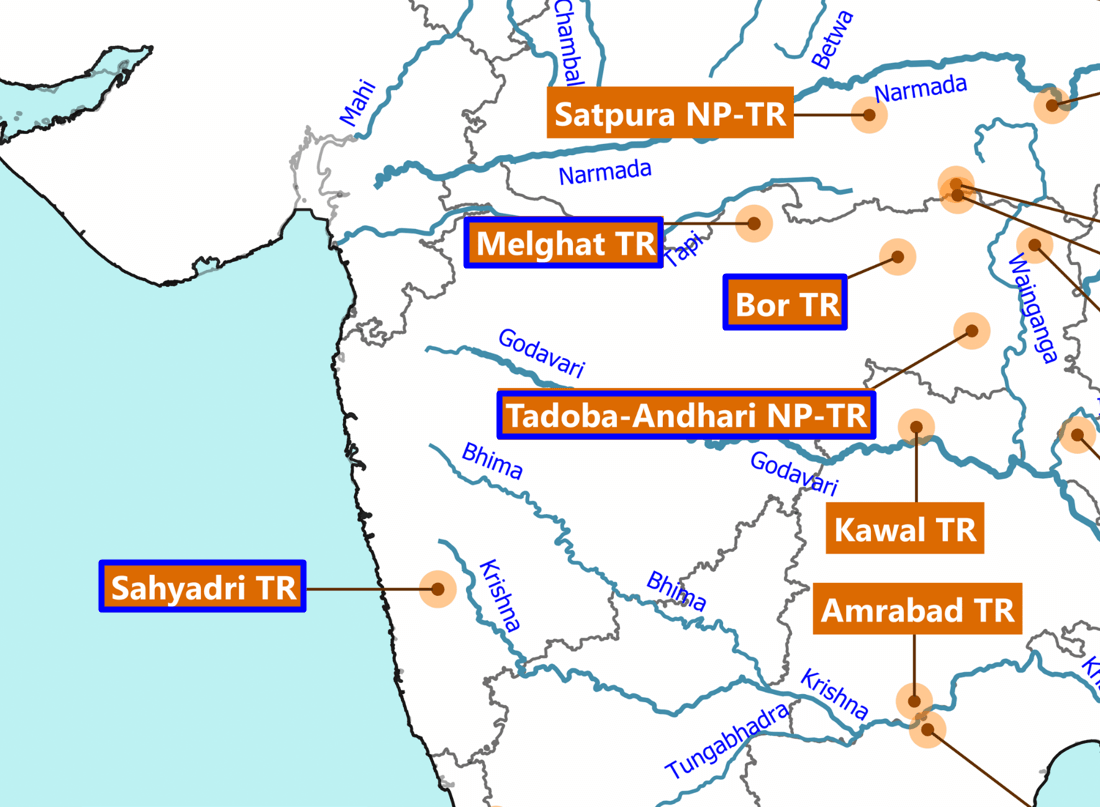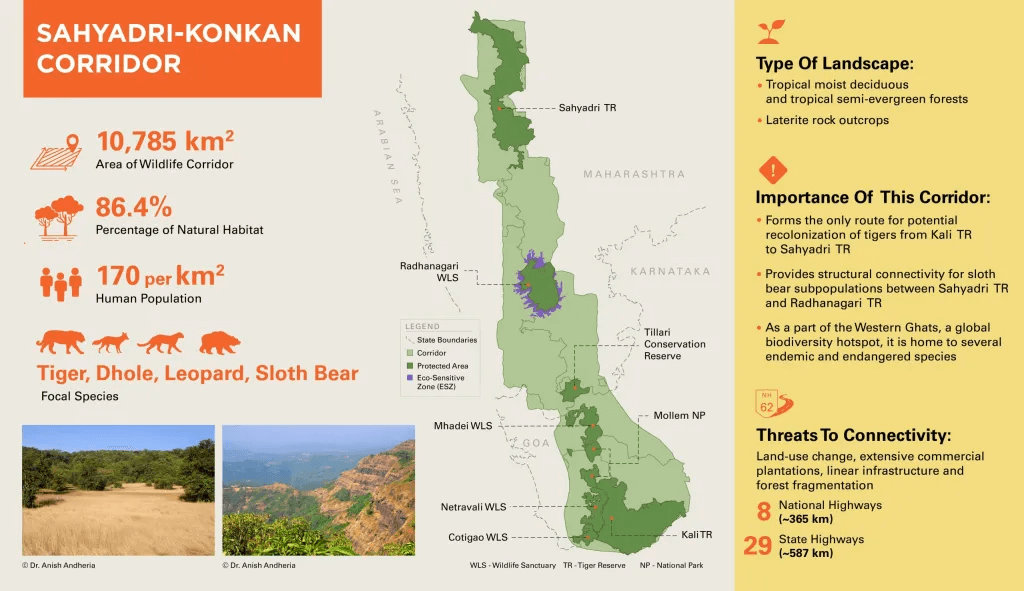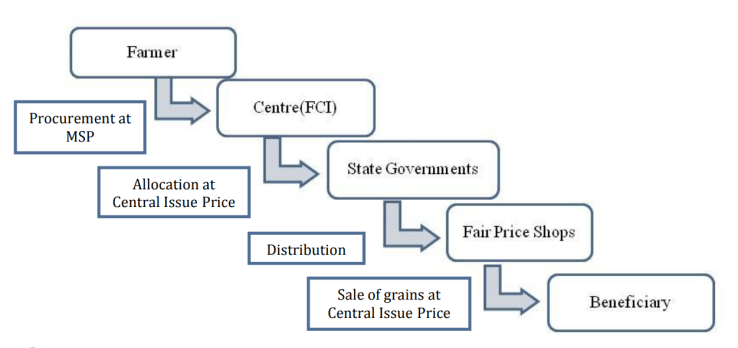
Tiger translocation to Sahyadri Reserve
Subscribers of "Current Affairs" course can Download Daily Current Affairs in PDF/DOC
Subscribe to Never Miss an Important Update! Assured Discounts on New Products!
Must Join PMF IAS Telegram Channel & PMF IAS History Telegram Channel
- Context (IE): Maharastra is gearing up for the translocation of a few tigers from the Tadoba-Andhari Tiger Reserve (TATR) in Chandrapur to Sahyadri, the lone tiger reserve in the state’s western region.
- It is part of a long-term plan to revive the big cat population in the northern Western Ghats forests.
- It serves as a tiger corridor connecting tiger populations in Sahyadri Reserve, Radhanagari Wildlife Sanctuary, Amboli Reserve forest in Maharastra, Mhadei Wildlife Sanctuary in Goa and Bhimgad Wildlife Sanctuary and Kali Tiger Reserve in Karnataka, according to the government’s All India Tiger Estimation report, 2023.
- The National Tiger Conservation Authority (NTCA) cleared the translocation plan in 2023, and final approval from the Union Environment Ministry is awaited.
- In the initial phase, a male tiger or a pair of male and female tigers would be translocated. The later phase involves the translocation of eight tigers from the Pench Tiger Reserve landscape.
- It will be a soft release, which involves monitoring tiger in an enclosure before releasing it into habitat.
- Tranquilisation of tiger for translocation is permitted under Section 12 of the Wildlife Protection Act.
Section 12 of the Wildlife Act 1972
|
- The STR forest department has already completed phase I, which involves preparing the habitat for the big cats’ reintroduction, augmenting prey, improving forest protection, and building a temporary enclosure for their soft release.
Why is Maharashtra planning to translocate tigers to STR?
- The tiger population in the region has been historically low due to poaching, poor prey base, and changing habitat. Even after the STR was notified, the number of tigers did not increase as breeding tigers did not colonise the reserve.
- The population can increase through the inflow of tigers from the forests with the strengthening of the wildlife corridor. However, the spike in tiger numbers can take years. As a result, the translocation of tigers has been opted for short-term outcomes.
Is translocation the best approach for tiger recovery?
- Tiger translocation projects have been undertaken in India since 2008. Sariska Tiger Reserve, in 2008, & Panna Tiger Reserve, in 2009, have witnessed successful tiger reintroduction and translocation projects.
- However, there have been many failures and shelving of reintroduction plans, for e.g. in Satkosia Tiger Reserve in Odisha, which was the country’s first inter-state translocation project. Thus, translocation initiatives have been a mixed bag so far, and they should not be considered a last resort.
- Poor management of community apprehensions was a key reason for the translocation project’s failure. For e.g. the protests over tiger reintroduction from Kanha in 2018 over perceived impact on humans.
Sahyadri Tiger Reserve (STR)
|
Role of Wildlife Corridors in Conservation
- In 2014-15, the National Tiger Conservation Authority and Wildlife Institute of India (WII) mapped 32 major tiger corridors in the country across four broad tiger landscapes – Shivalik Hills and Gangetic plains, Central India and Eastern Ghats, Western Ghats, and the North East Hills.
- Corridors are essentially habitats and pathways that connect wildlife populations, which are fragmented by human settlements and infrastructure works.
- They are crucial for the long-term survival of wildlife as they help guard against localised extinctions and ensure the exchange of gene flow, which helps in population diversity.
Sahyadri-Konkan Corridor / Sahyadri-Radhanagari-Goa-Karnataka corridor
Credits: Coalition for Wildlife Corridors |





![PMF IAS Environment for UPSC 2022-23 [paperback] PMF IAS [Nov 30, 2021]…](https://pmfias.b-cdn.net/wp-content/uploads/2024/04/pmfiasenvironmentforupsc2022-23paperbackpmfiasnov302021.jpg)












